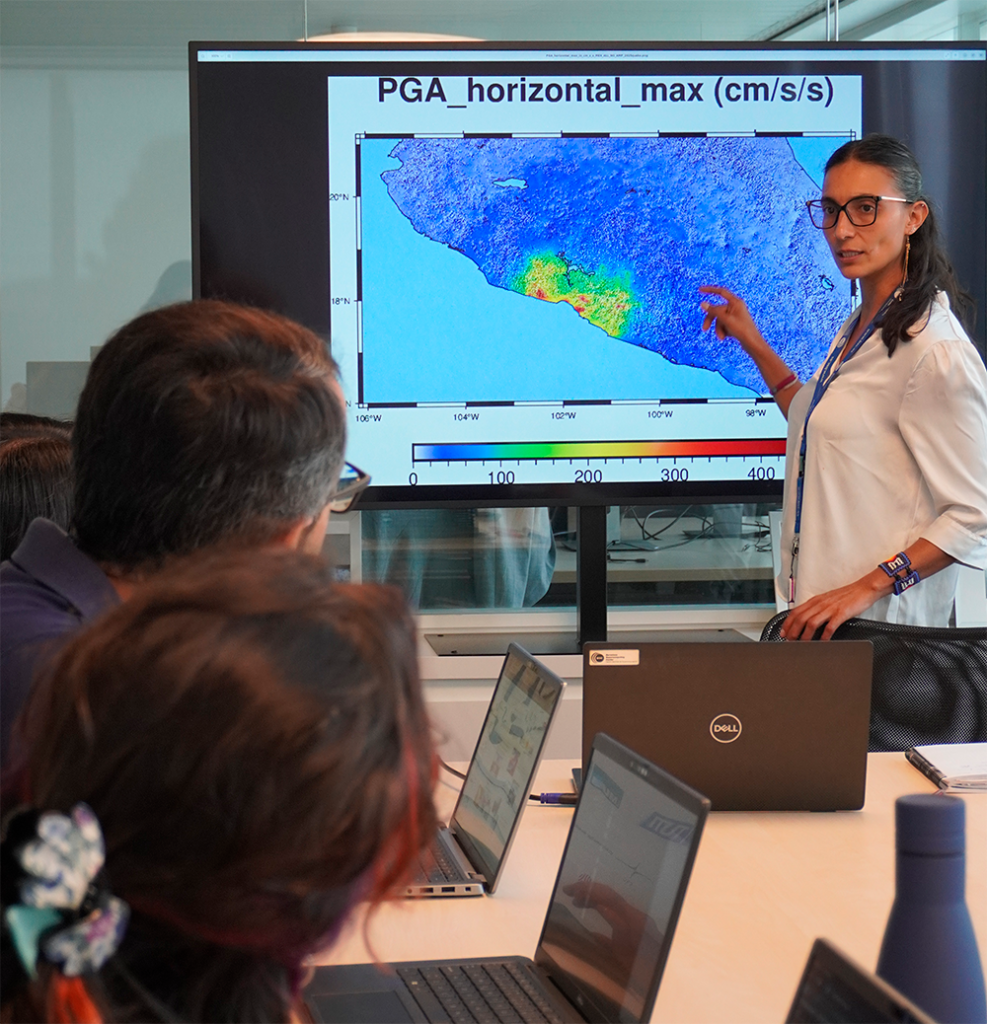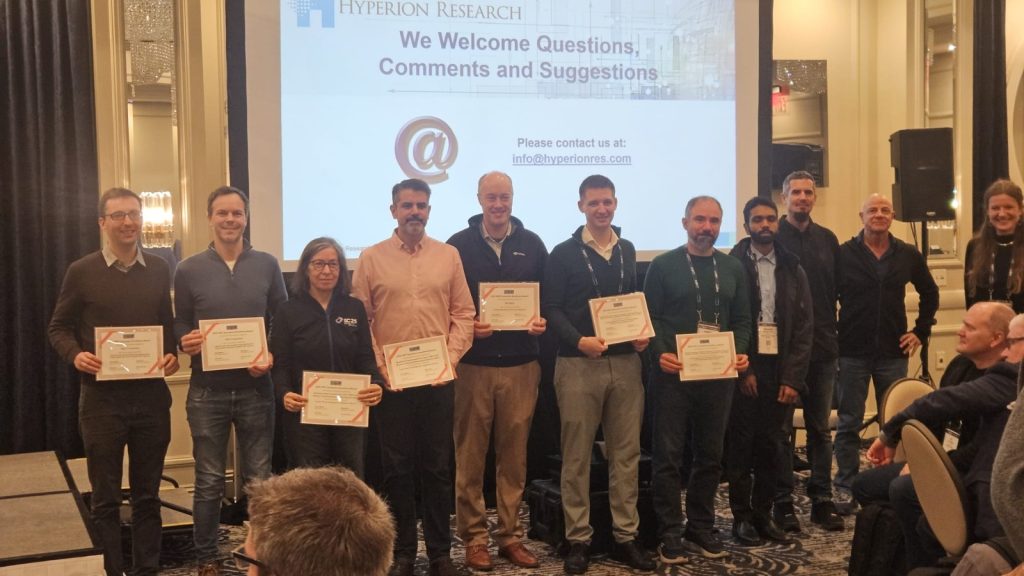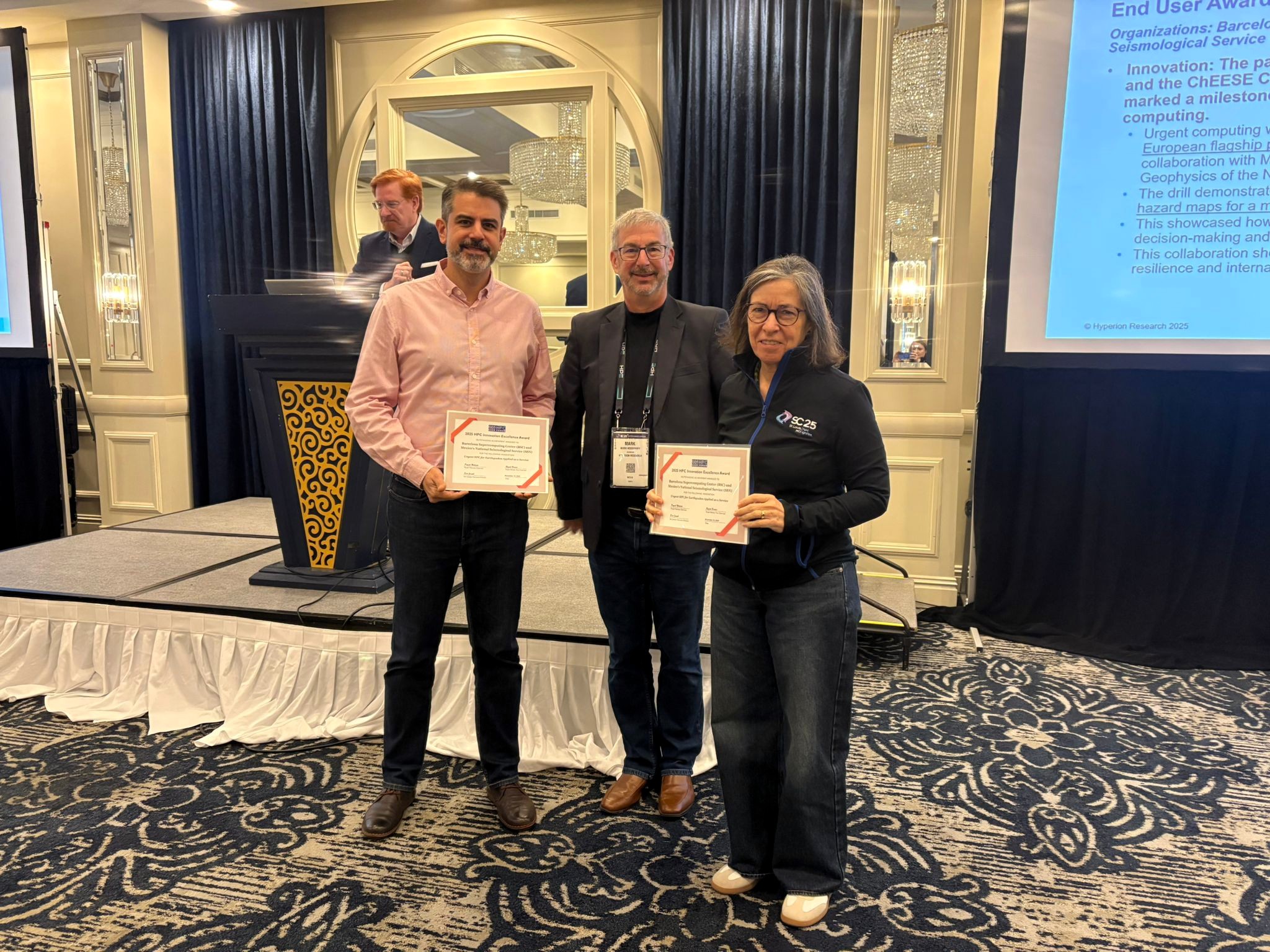Directors Cristian Canton and Rosa M. Badia represented the Barcelona Supercomputing Center and the ChEESE team at the awards ceremony in St. Louis, United States.
Award for ChEESE and BSC’s real-time quake work
A global award recognising how European supercomputing is shaping emergency response.
ChEESE, together with the Barcelona Supercomputing Center (BSC), received the HPC Innovation Excellence Award 2025 for its urgent-computing trial during Mexico’s National Earthquake Drill. The project demonstrated how HPC can deliver near real-time simulations for civil protection.
The award was presented at SC25 on 18 November 2025 in St. Louis, Missouri.
The Barcelona Supercomputing Center (BSC) has been honoured with the 2025 HPC Innovation Excellence Award for its pioneering trial conducted during Mexico’s National Earthquake Drill on 19 September 2025. This successful exercise, led by researchers from the BSC’s CASE and Computer Sciences departments, who are key contributors to the ChEESE-2P project, generated high-resolution, near-real-time simulations to support emergency preparedness and decision-making.
“This award highlights the importance of collaboration between institutions and the practical application of HPC in disaster preparedness. The trial with our partners in Mexico shows how European supercomputing technologies can directly support emergency management and public safety,” said Marisol Monterrubio, scientific lead of the test at the Barcelona Supercomputing Center.
The trial represents a pioneering step for European HPC in emergency management, demonstrating how advanced computing can be applied to urgent, large-scale disaster simulations. It also validated the integration of real-time seismic alert data, automatic data transfer between Mexican and European facilities, and advanced visualization tools, including videos illustrating earthquake propagation and expected impacts.
The context behind the drill
The trial took place during Mexico’s National Earthquake Drill, which is held every 19 September to commemorate and learn from the devastating earthquakes of 1985 and 2017. The scenario selected for this edition imagined a magnitude 8.1 rupture beneath the country’s Pacific coast. An event of this scale would shake several Mexican states and test even the most experienced emergency planners.
BSC, through ChEESE, worked with the Institute of Geophysics of the National Autonomous University of Mexico (UNAM), the Mexican National Seismological Service (SSN) and the Swiss software battalion Mondaic. The Salvus simulation framework developed by Mondaic served as the computational engine of the operation.
Teams at BSC transformed seismic warning data into actionable forecasts. Using the MareNostrum 5 supercomputer, they created ground-shaking maps, hazard indicators and impact assessments with a level of speed and detail rarely achieved in real-time seismic response.
How the Mexican earthquake drill became an HPC testbed
From past earthquakes to real-time simulations on MareNostrum 5.
Devastating earthquakes reshape preparedness
Mexico experiences two major earthquakes, in 1985 and 2017. Their impact leads to a lasting commitment to large-scale earthquake drills and improved risk awareness.
National Earthquake Drill becomes a yearly ritual
To honour the victims and lessons of those events, Mexico holds a National Earthquake Drill each year. Millions of people participate to rehearse evacuation and emergency procedures.
A magnitude 8.1 rupture along the Pacific coast
For this edition of the drill, authorities choose a hypothetical magnitude 8.1 earthquake beneath the Pacific coast. A quake of this size would shake several Mexican states and present a severe challenge for emergency planners.
ChEESE, BSC and Mexican partners join forces
ChEESE and the Barcelona Supercomputing Center coordinate with UNAM, the Mexican National Seismological Service, and Mondaic. Salvus framework is used as the computational engine.
BSC teams run real-time simulations on MareNostrum 5
Teams transform seismic warning data into forecasts. Using MareNostrum 5, they generate ground-shaking maps and hazard indicators quickly.
HPC as a direct tool for public safety
The trial shows how European HPC can support emergency management in Mexico. It validates a workflow between research infrastructures and international partners.
The ChEESE-led trial stands out because it brings together speed, automation and scientific precision. The urgent-computing workflow, known as UCIS4EQ, activates immediately when seismic sensors detect the first waves of a large earthquake. The system receives real-time alerts, transfers data between Mexico and Europe, launches GPU-accelerated simulations and produces visualisations that show how seismic waves spread across diverse terrain.
In a real emergency, such information can help civil protection authorities identify which neighbourhoods are likely to experience the strongest shaking, where landslides may occur and which infrastructures might be at highest risk.
“What sets this initiative apart, in my opinion, is its unique position at the crossroads of several HPC domains. We begin with an urgent, admittedly unconventional, need for immediate computing power. We meet this challenge with semi-automated, end-to-end workflows, boosted by the most efficient GPU-enabled simulation packages. And we do it all for one crucial reason: to protect vulnerable populations right after an earthquake strikes. In full coordination with the responders“, said Josep de la Puente, Group Leader of Wave Phenomena at the Barcelona Supercomputing Center.
Collaboration between science and emergency services
The Mexican National Seismological Service, which is part of the ChEESE Industry and Users Board, provided operational guidance that helped ensure the workflow aligned with real needs in emergency management. The partnership reflects a broader shift in geoscience, where high-performance computing centres increasingly collaborate directly with civil protection institutions.
For ChEESE, now in its second phase, the drill in Mexico represents more than a technical demonstration. It provides evidence that the tools it develops can operate in real emergency settings, and it aligns with the societal impact expected from the European Commission’s Centres of Excellence.



Researchers Marisol Monterrubio, Georgina Díez, and Leonarda Isabel Esquivel Mendiola, led the exercise at BSC with the MareNostrum 5 supercomputer
The recognition
The HPC Innovation Excellence Award was created in 2011 by Hyperion Research. It recognises the use of high-performance computing to deliver measurable benefits to society. Previous recipients have included advances in climate modelling, medicine, energy systems and astrophysics.
By receiving the award, ChEESE becomes part of a select group of initiatives showing how supercomputers are evolving from research instruments into tools that support real-time decision-making.
As climate change increases the frequency and intensity of natural disasters, tools like those developed by ChEESE and tested at BSC are likely to become standard resources for emergency response agencies.
Whether in Mexico, Europe or elsewhere, the message remains consistent. Supercomputing is no longer confined to research laboratories. It is becoming an essential component in the way societies prepare for and respond to the unexpected.

2025 HPC Innovation Excellence Award Winners.
Credits
- Published
- 19 November 2025
- Authors
- Aerton Guimarães and Varvara Vedia – ChEESE-2P Dissemination Team
- Photos
- Sara Ibáñez (2025 HPC Innovation Excellence Award Winners) & Aerton Guimarães and Varvara Vedia (Wave Phenomena Group Photos)



